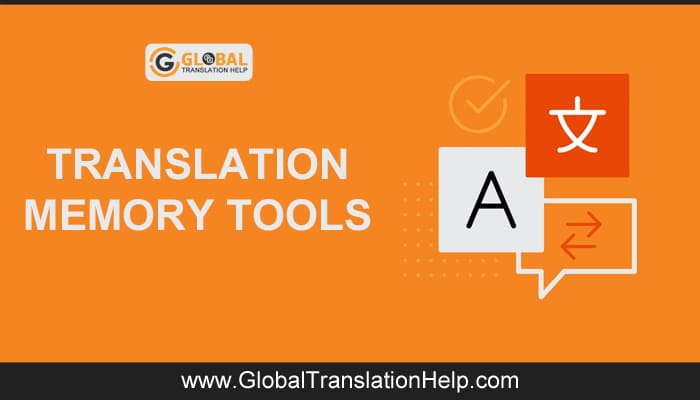WHAT IS TRANSLATION MEMORY?
Translation Memory is a database for sentence pairs that means it matches the source and target segments. It is a feature of computer-assisted translation systems with aids the process of translation. To clarify, Translation Memory tools are software applications that most human translators use. It, therefore, stores source segments and their corresponding translations in a database, commonly known as translation memory.

After the translation of a segment, it becomes part of the database. Further, if the translator needs to translate the same segment again, the software will pull the translation automatically from the translation memory. It automatically suggests identical or similar matches the segment for new documents translations. This means previous language translation of sentences, paragraphs, or segments of text need not be translated again.
TYPES OF TRANSLATION MEMORY TOOLS
There are many benefits to a translation memory, and translation memory tools not just limited to the translation of content in text format. Most have built-in filters that let you translate different file formats for instance web HTML pages, spreadsheets, or even PowerPoint files. Moreover, these filters present only the translatable text, and “hide” all of the underlying code from the translator. There are basically 2 types of translation tools:
- Text Based Tools- These tools usually work with MS-Word document, or an HTML file, etc. A content translation can be possible as long as the translatable text within the file isolate and in a format that the tool is able to process. Therefore, a localization engineer will isolate the translatable text, and convert the file into a format that the tool can process.
- Binary Based Tools- These tools assist the localization of software user interface. It allows for the translation of the text to display within the application’s dialog, as well as its error messages. Moreover, translation memories of these tools allow you to store more than just the source and target language segments. They also save additional information such as the location and size of the different dialog controls.
These types of translation memory tools are for different types of files. Moreover, it is possible to translate certain types of files using either tool. So, it is more efficient to use the tool that is most appropriate for the types of files that it was designed to work with.
BENEFITS OF TM TOOLS
Whether you already have built a translation memory or not, these are the major benefits to tools of translation memory:
- Translation memory recognizes anything that has been previously translated which decrease costs on translations.
- It reduces the turnaround time. That is to say, the less a translator has to translate which will generate quicker turnaround times for your projects.
- For large document translations, translation memory helps ensure that every piece of the copy will be translated which helps to produce high-quality translations.
- Since everything is in a centralized location, one can access any department, from any location and for any project.
In addition, there are several computer-assisted translation tools with use translation memory as the basis of their technology. Some tools are free like OmegaT. Others come at higher prices, like the 20th-century but increasingly heavy Trados (now Studio). So, one should be aware of the type of translation tool they need. Otherwise, we always have an option to hire an online translator for a more efficient and accurate translation.
